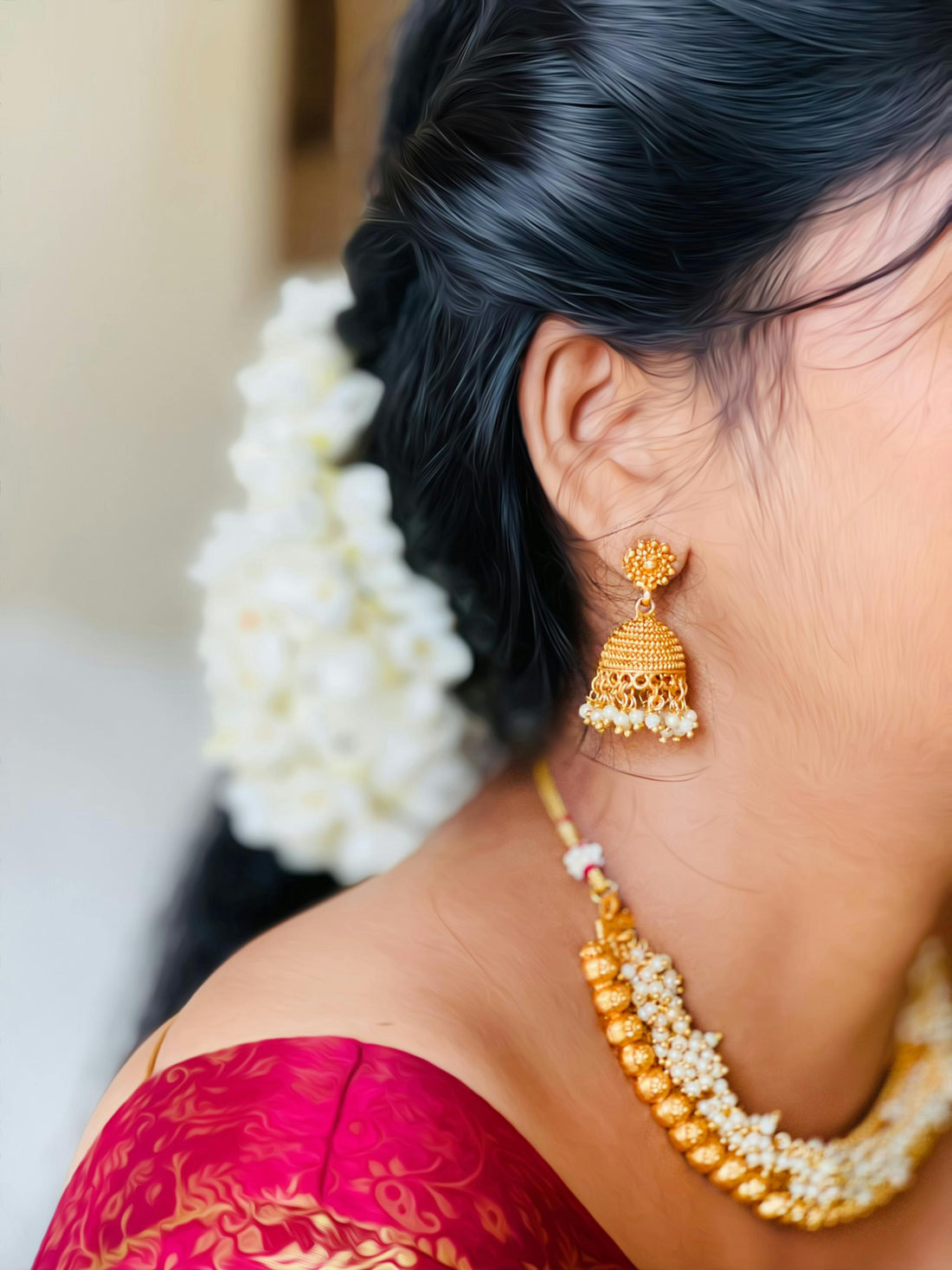
The Timeless Appeal of Gold Jhumki Earrings: A Journey Through History
Gold jhumki earrings — also known as jhumkas — have long held a special place in South Asian adornment. Recognised for their distinctive bell-shaped silhouette and intricate detailing, jhumkis are more than just jewellery — they are icons of tradition, craftsmanship, and cultural continuity. Whether you know them as jhumkis or jhumkas, their elegance and versatility have made them a beloved accessory for generations.
Let’s take a closer look at the fascinating journey of these timeless earrings and how they’ve evolved through the ages.
Ancient Origins: Where It All Began
The history of gold jhumkis dates back to ancient India, particularly during the Maurya and Gupta periods (circa 3rd century BCE to 6th century CE). Artwork and sculpture from this time show women — and even deities — wearing earrings that strongly resemble today’s jhumkis. These early designs were crafted in gold and often adorned with pearls, serving both as a symbol of status and spiritual significance.
Gold, revered for its purity and connection to prosperity, made jhumkis a popular choice among royalty and the elite. Their symmetrical, bell-like shape and soft, musical movement were seen as not only aesthetically pleasing but also auspicious.
Temple Jewellery and Sacred Design
During the medieval era, particularly under the Chola and Vijayanagara dynasties in South India, gold jhumkis became central to temple jewellery. These pieces were often designed for deities and classical dancers, especially in Bharatanatyam and Kuchipudi traditions.
Jhumkas from this period were more elaborate, featuring motifs such as lotus buds, peacocks, and temple domes. The craftsmanship was detailed and intentional, reflecting both artistic and spiritual sensibilities. Even today, many South Indian brides wear temple-style gold jhumkis as a nod to this rich heritage.
Mughal Influence: Finesse Meets Flourish
The Mughal period brought new stylistic elements to jhumki design. The introduction of Persian-inspired detailing, such as meenakari (enamel work), kundan (gemstone setting), and delicate filigree, elevated the aesthetic to something even more intricate.
Under Mughal influence, gold jhumkas took on more ornate forms and became widely popular across northern India. These earrings were no longer confined to religious or royal use — they became part of the broader cultural language of beauty and elegance.
From Silver Screen to Street Style
The 20th century saw jhumkis move into mainstream popularity, thanks in large part to Indian cinema. Bollywood actresses frequently wore gold jhumkas in classic films, solidifying their status as a must-have accessory for festive and bridal occasions.
Today, retailers such as Paul Jewellers offer a carefully curated range of gold jhumki earrings that balance traditional charm with contemporary design. Whether you’re seeking a bold, bridal piece or a more understated, everyday style, Paul Jewellers is known for its quality craftsmanship and attention to detail — making it a trusted name for South Asian jewellery in the UK.
Contemporary Versatility
What sets gold jhumki earrings apart is their adaptability. They complement both traditional and modern ensembles and are available in a variety of sizes and finishes, from minimalist designs to grand, multilayered creations. Whether paired with a silk saree or styled alongside fusion wear, gold jhumkas remain a favourite across generations.
They are often gifted during weddings, festivals, and other milestones — treasured not just for their beauty, but also for the memories and meaning they carry.
The Enduring Allure of Gold Jhumkis
Gold jhumki earrings — or jhumkas — are more than ornamental accessories. They are enduring symbols of heritage, artistry, and timeless style. Rooted in centuries of tradition and yet continually evolving, jhumkis bridge the gap between the ancient and the contemporary.
Whether worn with traditional attire or styled with modern fashion, gold jhumkas remain a beloved choice for their elegance, versatility, and cultural significance. Retailers like Paul Jewellers continue to preserve this legacy by offering exquisite jhumkis that honour their origins while meeting today’s fashion sensibilities.
